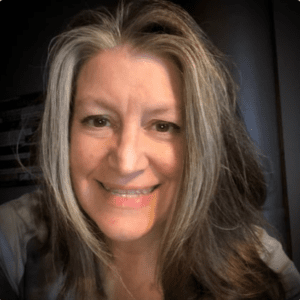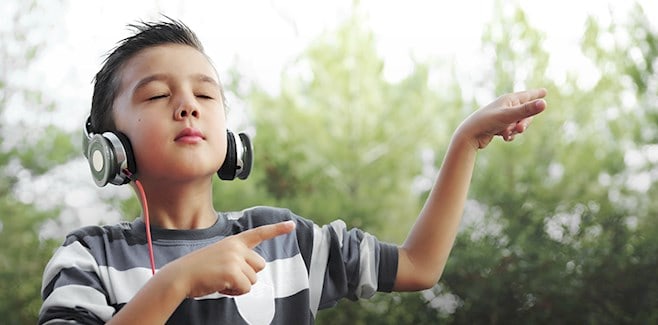Developing Your Musical Expression [Part One]
Found in: Coaching
 Long-time Simply Music Teacher and respected contributor to the music education community Laurie Richards is a believer in the communicative power of music, but only when we really think about just what it is that we want the song to communicate. In this article she urges us to consider “playing the music, not the instrument” and gives us practical ways to extract the essence of a piece of music, rather than just going through the motions.
Long-time Simply Music Teacher and respected contributor to the music education community Laurie Richards is a believer in the communicative power of music, but only when we really think about just what it is that we want the song to communicate. In this article she urges us to consider “playing the music, not the instrument” and gives us practical ways to extract the essence of a piece of music, rather than just going through the motions.
I recently saw a quote posted on a social media site: “Play the music, not the instrument” – the sentiment being that music is more than just a collection of notes, melodies and chord progressions. Music communicates something – a feeling, an emotion, a story. Ultimately it should be an extension of the musician, an expression of feelings evoked by the music. This seems to come more naturally for some than for others, and it certainly evolves with maturity and experience. However, here are three things you can do to encourage and inspire the development of musical expression in your piano playing.
1 – Connect with music as a story
Perhaps the quickest way to connect with music as a story is to think of movie soundtracks. Film music manipulates our emotions. If you watch an intense movie scene with music, then watch the same scene without the music, it becomes obvious how the music communicates just as much as the dialogue or the setting.
For a fun demonstration of how music affects our perception in movies, see How Music Can Change a Film. You will see a video clip from Pirates of the Caribbean.
The same 40-second clip is played four times, each time with a different style of music:
- Triumphant and Victorious (original music from the movie)
- Scary and Foreboding
- Comical
- Sad and Thoughtful
Although there is no dialogue, the different types of music completely change your perception of the story.
The story is more important than the notes. Vladimir Horowitz, one of the great pianists of the 20th century, was apparently known for making errors, but he played the story so beautifully it didn’t really matter. Horowitz himself said, “I must tell you I take terrible risks. Because my playing is very clear, when I make a mistake you hear it. If you want me to play only the notes without any specific dynamics, I will never make one mistake. Never be afraid to dare.” When you play a song, think of a story or movie scene that the music might accompany. Visualize that story in your mind as you play.
2 – Be aware of how you sound
When we speak, we communicate much more than just the words we utter. The meaning or implication of the words can change drastically depending on how they are delivered.
A few examples:
- Emphasis on different words – Consider how the meaning of the following sentence changes depending upon which word is emphasized:
- That’s not what I said
- That’s not what I said
- That’s not what I said
- Volume of voice
- Pauses – Example: “I find that very interesting.” vs. “I find that very… interesting.”
- Inflection
The same idea applies when playing music. The meaning or emotion can change depending upon how you play the notes. Or, it can be almost devoid of meaning, like speaking in a robot voice. It’s not uncommon to feel surprised when hearing a recording of ourselves playing a piece. We may have thought of it as sounding quite different as we played it. For that reason, it’s a good idea to listen to a recording of yourself playing to increase your awareness.
On occasion I have assigned students to do this as an exercise – record themselves playing a few songs, then write down 3 things they noticed about it. Typical comments are, “I sped up a lot” or “My rhythm wasn’t even”. We don’t even realize it while playing.
The same can be true of our musical expression. If you listen to your playing with the intent of hearing a story, it can help you determine what story or emotion you want to hear; then you develop musicianship as you consciously try to create that story. Which emotion do you want? How much emotion? Make it personal – think of a person, a situation, or event in your life that helps you connect with that emotion.

3 – Practice Musicianship
On a practical level, if you want to develop your musical expression but aren’t sure how, here are some tips:
- Record and listen to yourself regularly. Listen for your story.
- Listen to other musicians with the intent of focusing on their musical expression; this can be motivating, and it may give you more ideas of how you can express emotion through music.
- Choose a piece you play well technically so you don’t have to concentrate on mechanics. Experiment specifically with fluctuations in:
- Think of yourself as a storyteller, not with words but with music. Let your story take over – be absorbed in the story. As you play, visualize a scene that helps you communicate your story. Use experiences from your own life to help you match the emotion of the song.
- Try the fabulous curricula available at InnerMusician. It’s all about expressing story through music.
- Play for other people sometimes. I have heard it suggested that music doesn’t really come to life until you share it, anymore than a conversation happens with only one person present – that we must interact with people for something to happen on a deep level. Enjoy telling your story; play the music, not the instrument.
– tempo
– touch
– rhythm – ebb and flow vs. exact rhythm
– highs/lows, climax
– pedaling
Check back next month for Part 2, for some practical steps which help with the development of musical expression.








